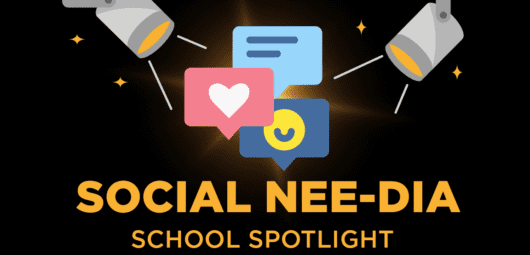NEE Helps Leaders Build and Maintain School Culture
Earlier this school year, we wrote about how school leaders impact culture and climate through the responsibility and freedom of leadership. Leadership is tough, and building and maintaining school culture is also not easy. The Network for Educator Effectiveness is a driver to help your leadership build and maintain the culture you want in your building. Let’s explore ways NEE can tie leadership and culture together.
Measure what matters
The best way NEE helps drive school culture is by giving school leaders the keys to measure what matters. NEE, and evaluation in general, shouldn’t be another thing to do nor another box to check. It should be the thing to do when you want to check on progress and ensure things are working as intended. NEE’s comprehensive evaluation measures and rubrics provide the ability to measure specific indicators and generate data for progress monitoring.
Align NEE with your school mission
Think about your school mission. Do a crosswalk between your school mission and the NEE indicators to determine your focus. Consider which indicators can help you measure your mission, and make sure that mission is being adhered to throughout the building. Also determine which NEE components (classroom observations, teacher surveys of principals, professional learning organizers, etc.) can help you measure those focus indicators. NEE provides the tools to evaluate the action steps, processes, and implementation of your school mission and building improvement plans.
Remember evaluation begins the growth cycle
Remember evaluation is the beginning of the conversation. Think through the many growth cycles you have seen over the years and even the NEE growth cycles you might have worked on in previous NEE trainings. Evaluation is often seen as the last step of growth cycles, but cycles aren’t linear: Evaluation actually is the first step of the next cycle. Evaluation begins growth, and growth happens through purposeful action and conversation.
Use NEE data in discussions
NEE can help you plan out conversations you want to have throughout the school year. As you think about plans for next school year, what do you want to make sure you touch base on during meetings with individual teachers? Use the NEE evaluation measures and rubrics to target those discussions and build discussion points. What do you want to bring to faculty meetings monthly? NEE evaluation data and reports can help you build those talking points.
Determine feedback frequency
How often do you want to talk with each teacher? Your answer to that question determines how many evaluation data points you should have throughout the school year. Sometimes your conversations might focus on classroom observation data, while other times you might discuss student survey data. Some months, it might be time to check in on the teacher’s professional development plan. No matter the topic, the importance is in having the conversation and using effective feedback to nurture growth.
Keep feedback forward-focused
Conversations with teachers must be forward-focused. This is one of the tenets of effective feedback. Each conversation should start by presenting the latest data that has been collected and should then focus on what comes next. Collaborate with a teacher to determine a plan of action, or develop your own plan that you would like the teacher to see through. Either way, have tangible performance measures and outcomes that can guide you both toward the next feedback conversation.
Guide teacher professional development
There are multiple ways to help a teacher with their professional development. With NEE reports, you can spot PD opportunities for individual teachers, small groups of teachers, or whole faculties. With a thorough review of NEE data and understanding your teachers’ needs, you can also target the goals of each type of professional development. The first type of professional development is learning the foundational pieces of the process. This type includes book-reads, journal articles, and workshops. The second type involves the integration of new skills. Think peer observation, instructional coaching, and self-reflection. The third type is reinforcing behaviors. This type might include data teams that review effectiveness, continued collaboration on implementation of a strategy, and peer observation to further refine practice.
Cultures grow through consistency and commitment. School leaders can leverage evaluation processes as they build and maintain school culture. NEE can help you monitor the culture you expect your school to develop, measure progress on the initiatives and growth you are expecting, and build effective feedback conversations. NEE provides support for individual and large-group professional development. NEE can be there for you every step of the growth cycle.
Tom Hairston is the Managing Director of the Network for Educator Effectiveness and has worked with NEE since 2011. Prior to his work with NEE, he worked as a Positive Behavioral Interventions & Supports Consultant for the Heart of Missouri Regional Professional Development Center at the University of Missouri. He began his career in education as a high school special education and language arts teacher and football coach at Moberly High School in Moberly, Mo. Tom received his PhD in Educational Leadership and Policy Analysis from the University of Missouri in 2012.
The Network for Educator Effectiveness (NEE) is a simple yet powerful comprehensive system for educator evaluation that helps educators grow, students learn, and schools improve. Developed by preK-12 practitioners and experts at the University of Missouri, NEE brings together classroom observation, student feedback, teacher curriculum planning, and professional development as measures of effectiveness in a secure online portal designed to promote educator growth and development.


